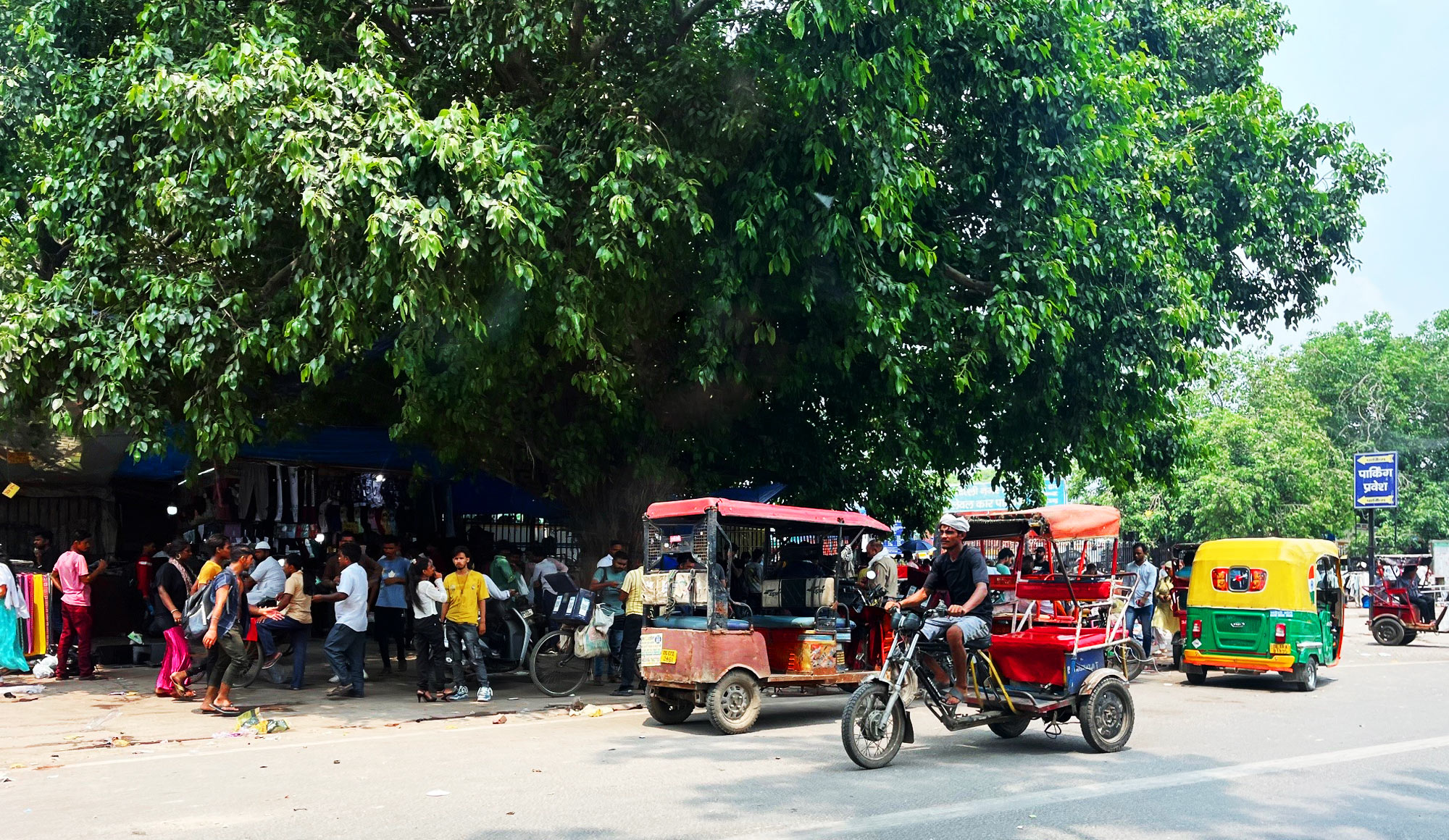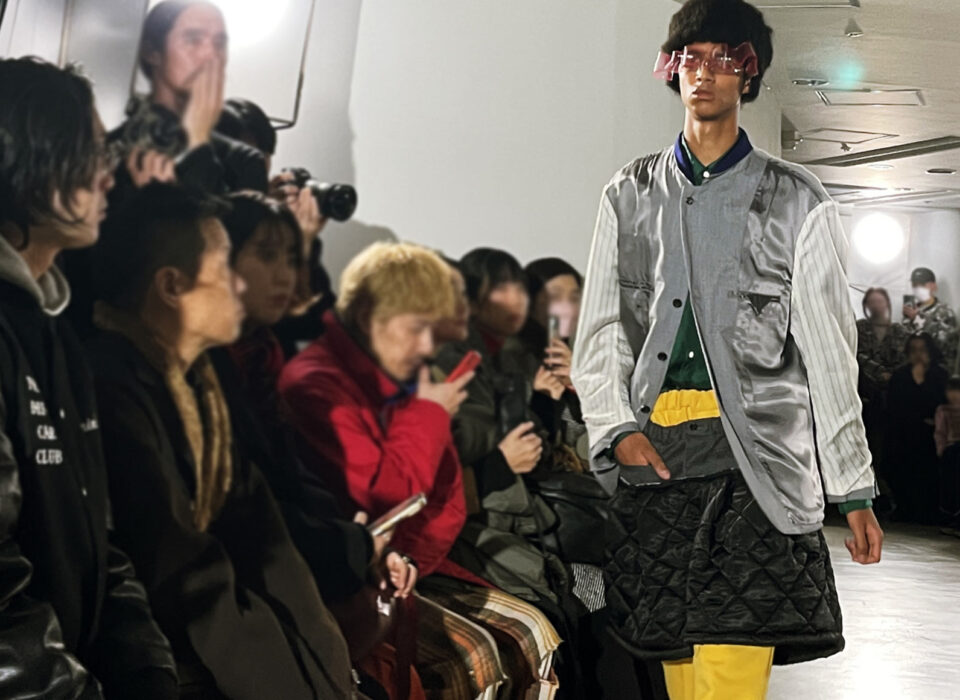

- VOICE
- NAKAMURA COLUMN
- TEXT : NORIKO NAKAMURA (Asahi Kasei, Bemberg™ Coordinator)
Significance of Clothing Contemplated During India’s Monsoon Season
-
As soon as I stepped outside, I felt the dampness of the air clinging to my skin. The peak of midsummer in India had passed, but it was still extremely hot and humid in Delhi in July. The main purpose of my first business trip to India in five years due to the Corona disaster, was to participate in a textile fair in Delhi.
The day before the event, I was watching Indian carpenters in sweaty T-shirts working on the booths in humidity where even functional fabrics would not help, and felt empty as my makeup and carefully applied sunscreen dripped away with the sweat. The venue, which is not air-conditioned, is so humid that one might ask, “Is this a Turkish Bath?” I was seating so much that I forcefully changed my mind that this might be good for my skin, and while looking at the flies buzzing around, I checked the position of the logo on the wall and was shocked to see the display stand painted in sky blue, which is far from the brand color of Bemberg™.
On the morning of the first day of the exhibition, as soon as I entered the stock space in the company’s completed booth, I was struck by the sight of an Indian carpenter sleeping peacefully under a table. Somehow, he had spent the night there. Over the years, the exhibition hall has been renovated and beautified, but “Incredible India” is still alive and well. This time, I would like to write about the significance of clothing, which I reflected on amidst the chaos of India that I experienced after a long time.
-

“The Role of Clothing: It’s Protection, Isn’t It?”
Roland Barthes, the French thinker known for his research on clothing, ”The Fashion System,” changed the method of his previous research on clothing, developed from a sociological perspective which emphasized ”protection, shame, and decoration” as motives for wearing clothes, while using linguistics to support his claim. He also explains the social role of clothing as a means to show off one’s class and to be distinguished from others, which is also the case with dandyism, which flourished after the French Revolution.
Certainly, even as someone who plans to buy a high-quality coat to reflect my ideal image of myself 10 years from now, I understand the role that clothing can play both socially and as a means of self-expression. However, after experiencing the steaming hot weather in Delhi and considering the outdoor work clothes with built-in electric fans that have recently become common in Japan, wearing clothes in the middle of summer is no longer a battle to be more fashionable than the next person, the main purpose is to protect yourself from the environment, right? In the hot and humid July in Delhi, and with global warming on the rise, even georgette and chiffon fabrics with ultra high-twisted yarn and a crisp, dry touch, or cool touch fabrics with a smooth surface are not sufficient to cope with the heat, so there is no time to be talking about ”smooth and cool” a fabric is.
“The role of clothing: Symbolism as well”
The sari, India’s traditional wear, has symbolic significance, and the way it is worn varies according to ethnicity, region, and caste, with the ends of the fabric hanging down in front, behind, or with making the bottom part as pants. Incidentally, the decorative mark on a woman’s forehead, called a bindi, is a sign that she is married. To take a familiar Japanese example, wearing a suit and tie to work, wearing clothes from a sustainable brand, or wearing army pants or other so-called military items, all become symbols of the wearer’s personality and expressions of their thoughts, both consciously and subconsciously.
Furthermore, from the outside, people who dress in “I bought it because it was being sold (chosen by process of elimination)” may also like it very much or have a personal meaning to it. In the 19th century, Beau Brummell, the prototypical dandy, disliked standing out by being eccentric and wanted to create uniqueness through understated fashion. He was known to be extraordinarily particular about how he tied his necktie, but these days, from the selection of brands to the way you open your collar, to the material you use for the lining of your clothes, regardless of whether or not it is recognizable to others, any clothing or fashion is a symbol and has the role of conveying meaning.
(*Please refer to the many studies on dandyism and the semiotics of clothing.)
“Future direction of vectors in a growth market”
Where are the vectors in a growing market? Just as fashion studies in the past of Europe used to be focused on the leisured classes, India, with the world’s largest population of over 1.4 billion people and a market that is being enriched by the growing consumption of the middle class, has not focused on clothing for the poor who live in a harsh environment.
Those men I saw at the exhibition hall in Delhi, baggage carriers in worn-out vests (sleeveless undershirts) and sober-colored bottoms. Where does their stylishness (if it exists at all) manifest itself? With these thoughts in mind, I returned to Japan to find a midsummer that could rival that of Delhi, a Japanese summer in which the use of air-conditioning while you sleep is recommended because even the most cutting-edge clothing cannot make the heat bearable.
( Asahi Kasei PR )





